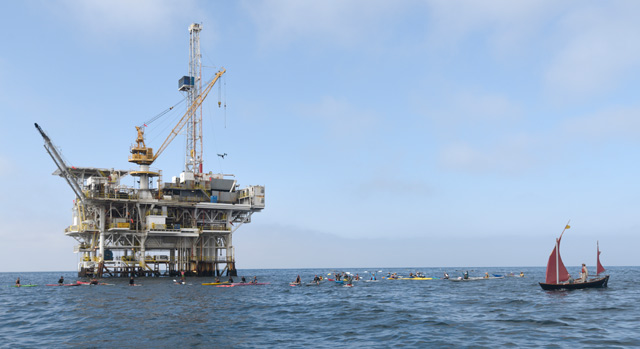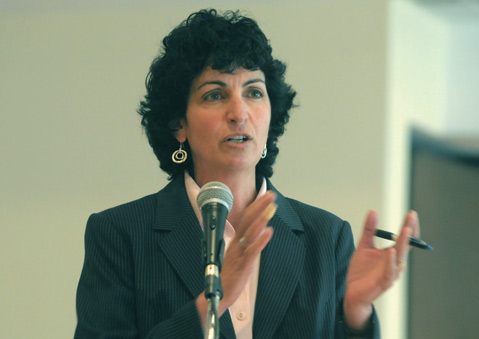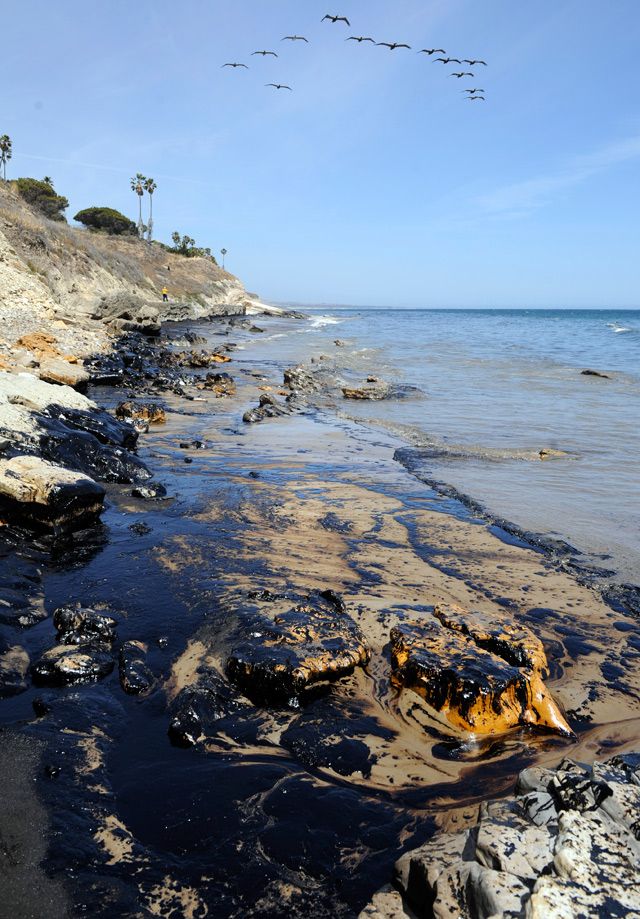Oil and the Fight for the Environment
How the Trump Administration Could Allow Oil Drilling and More

Of the 27 oil platforms in federal waters off the coast of California, 18 are located off the coast of Santa Barbara County. Clearly, there’s lots of oil here. For environmentalists such as Linda Krop, chief counsel with the Environmental Defense Center (EDC), this reality, coupled with the imminent ascendancy of President-elect Donald Trump, is cause for serious concern. “Oil, air, water, eco-system protection — we have no idea what this administration will do,” Krop said. “Everything is on the table.” Specifically, Krop is worried that a Trump White House could add tracts under a recently approved federal leasing proposal that does not expire until 2022. Though no Pacific tracts are currently included, the new administration could amend that plan without congressional approval. “We feel we’re in the bull’s-eye,” she said. “We used to have 40 more leases [tracts leased by oil companies from the federal government for oil production] that we had to extinguish through litigation. So the interest is clearly there.”
Even if that were to happen, Krop believes any new leasing plans would still face multiple hurdles. Additional environmental analysis would be required, public hearings held, legal findings made, and the California Coastal Commission would have to be persuaded. Nothing would happen overnight.
Peter Cantle, head of Santa Barbara County’s Energy Division — created to focus on offshore oil permitting issues — said such activity is driven by the price of oil per barrel. “It ebbs and flows with political pressure, but mostly it’s market-driven.” According to Cantle, there’s no obvious price-per-barrel threshold that activates industry interest. “Every project is different. The cost of getting oil out of the ground varies,” he said. “What happens next will be driven by oil markets and changes in the price of oil.”
For Krop, who has spent three decades leading the legal charge against offshore oil development in Santa Barbara County, that’s not reassuring. New technologies such as hydraulic fracking and oil acidification, she said, can extend the life span of platforms well past their anticipated expiration date. Offshore fracking, for example, has proved extremely difficult for oil watchdogs to track. For years, the federal agencies involved in permitting such activities denied fracking was even happening. It took a Freedom of Information Act lawsuit by the EDC to bring such activity to light. Krop then sued, arguing that the across-the-counter fracking permits dispensed by the Bureau of Ocean Energy Management (BOEM), formerly the Minerals Management Service, violated safeguards requiring environmental review. The agency then prepared an environmental review document that concluded offshore fracking and acidizing pose no significant environmental risks. In recent months, the EDC has filed a lawsuit contending that a conclusion was arrived at without any consideration of 25 species of endangered offshore sea life. That legal battle will continue into the regime of Donald Trump.

The only oil project in our coastal waters that a Trump White House and the pro-drilling Congress could affect is Platform Irene, located offshore in state — not federal — waters. ExxonMobil has been quietly pushing a plan to use slant drilling to extend its drilling straws into federal waters under the federal jurisdiction of Vandenberg Air Force Base. In the past, U.S. Air Force skepticism and reluctance has kept the project from moving forward. It should be noted that the likely new secretary of state will be Rex Wayne Tillerson, the former head of ExxonMobil.
No recent project has drawn such intense attention as the Phillips 66 oil trains proposal, which would haul an estimated 2.2 million gallons of treated tar sands from Phillips’s existing Nipomo plant three times a week in 80-car trains, 1.5 miles long. Critics have described the train as a 1.5-mile Molotov cocktail because of volatile chemical additives needed to make the thick tar sands transportable. There is nothing a Trump administration could do to approve this project. That lies with the San Luis Obispo County Board of Supervisors, who must first decide whether to allow the construction of a rail spur that would enable the proposal to move forward. Last fall, the S.L.O. Planning Commission voted to deny Phillips’s request to build the rail spur. Phillips has filed suit challenging that decision and is appealing directly to the S.L.O. County supervisors. Both deliberations promise to be intense, but the outcome will be determined at the local level.
Much oil and gas development in the Santa Barbara Channel has been brought to a screeching halt because of 2015’s Plains All American Pipeline rupture and spill. The federal agency responsible for pipeline safety has yet to announce what remediation efforts are required before the pipeline can be reactivated. Until that happens, about 40,000 barrels of oil a day are all dressed up with no place to go. Congress has already passed new pipeline operations safety requirements, and those measures — however improved — are still considerably weaker than those required by a California law passed in response to the El Refugio pipeline spill. The state Fire Marshal will now assume regulatory oversight for the Plains pipelines that failed to function. In addition, Plains still faces criminal charges filed by the California attorney general and the Santa Barbara district attorney.

Since 2005, Jeff Kuyper of ForestWatch has been battling the U.S. Forest Service’s plans to expand oil and gas leasing in 52,000 acres of Los Padres National Forest located in Santa Barbara and Ventura counties. A few weeks ago, Kuyper announced the Forest Service agreed to withdraw its proposal and start anew. Kuyper said the retreat announced by the Forest Service was just that — an announcement, not the product of a legally binding court order or stipulated settlement. Because of that, it could be undone with relative ease. Trump has stated he’d like to see oil drilling expanded on public lands, as has the Republican majority in Congress. Since Los Padres is the only forest in California’s federal lands to allow oil and gas drilling, Kuyper believes “we’re just a few degrees of separation from some bureaucrat in Washington and it becoming reality.” He did stress that any additional drilling would be subject to environmental review and a legally defensible public process that he and other advocates would use “to push back if need be.”
Bob Poole, formerly with Santa Maria Energy and now with the Western States Petroleum Association, said the Santa Barbara coast is well protected from new oil development by state and federal moratoria. (Krop insists the federal moratorium disappeared during the administration of George W. Bush and has never been reinstated; the exclusion of Santa Barbara tracts in federal leasing plans, however, have the same effect.) Poole said California and Santa Barbara have the most stringent environmental protections of any place on the planet, but since the state produces less than 40 percent of the oil it uses — 1.8 million gallons a day — it has a moral obligation to close the gap. “About 30 percent of the oil we use comes from Saudi Arabia and countries that don’t like us very much,” he said. “And they don’t have the environmental safeguards we do. Life is about managing risks. It’s not about just saying no.”
Unlike whiskey, oil is not for drinking, but, like water, it is about arguing. So no matter who’s in the White House, as long as the reserves are out there and the price of oil is high enough, there will be a fight.



